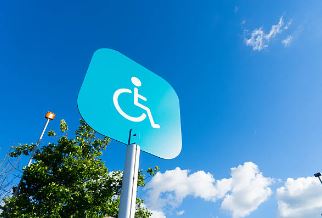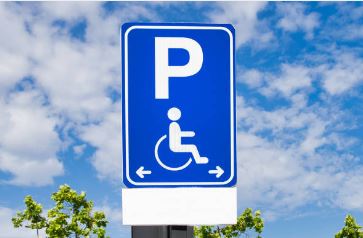Know your rights regarding disabled parking! This article explores the legal framework, ensuring equal access and convenience for individuals with disabilities. Learn about your rights and the legal obligations of businesses and public entities in providing accessible parking options. Whether you have a disability or support equal access, gain insights into cars for the disabled and disabled parking regulations.
The Legal Framework For Disabled Parking
In understanding the legal framework and rights for disabled parking, it’s important to be aware of both federal and state laws.

Federal laws, such as the Americans with Disabilities Act (ADA), set a baseline for accessibility and parking requirements.
Federal Laws
To fully comprehend the legal framework and rights for disabled parking, it’s important for you to understand the federal laws in place.
The Americans with Disabilities Act (ADA) is one of the most significant federal laws that protect the rights of individuals with disabilities. Under the ADA, all public and private entities that provide goods and services to the public, including parking facilities, must comply with accessibility standards. This means that parking spaces designated for disabled individuals must be properly marked, accessible, and located close to the entrance of the facility.
State Laws
State laws vary in their requirements for accessibility and accommodations for individuals with disabilities, ensuring that parking facilities and housing complexes are inclusive and accessible for all.
Each state has its own specific laws and regulations that govern disabled parking. These laws cover a wide range of areas, including the number of accessible parking spaces required, the size and location of these spaces, and the penalties for parking in a disabled spot without the proper permit.
It is important to familiarize yourself with the disabled parking laws in your state to ensure that you are aware of your rights and responsibilities.
Rights For Disabled Parking
In this discussion, we’ll explore the rights for disabled parking. We’ll focus on key points such as accessible parking spaces, accessible curb ramps, accessible restrooms, and accessible routes.

You’ll learn about the importance of these elements in ensuring equal access and inclusion for individuals with disabilities. By understanding these rights, you can help create an environment that’s accessible and accommodating for all.
Accessible Parking Spaces
Imagine yourself driving around a crowded parking lot, searching for a vacant spot, when suddenly you come across a row of accessible parking spaces designed for individuals with disabilities. These accessible parking spaces are marked with the internationally recognized symbol of accessibility – a blue and white wheelchair logo.
They are wider than regular parking spaces to accommodate vehicles equipped with wheelchair ramps or lifts. they are located closer to the entrance of the building or facility to provide convenience and ease of access for people with disabilities.
Accessible Curb Ramps
Accessible curb ramps are sloped sections of the sidewalk that provide a smooth transition between the sidewalk and the street, making it easier for individuals with disabilities to navigate the built environment. These ramps are designed to accommodate wheelchair users, individuals with mobility aids, and those with difficulty walking. They are required by law to be present at all pedestrian crossings, ensuring that everyone has equal access to public spaces.
Accessible Restrooms
Restrooms that are accessible to individuals with disabilities are equipped with features such as wider doorways, grab bars, and lower sinks to ensure ease of use and independence. These features are essential for individuals with mobility impairments, as they allow for easy maneuverability and support while using the restroom.
Accessible Routes
Navigating through a facility, you can easily identify accessible routes that are designed with clear signage and wide pathways to accommodate individuals with disabilities. These routes are strategically located to provide a convenient and safe way for people with disabilities to move around. They are free of obstacles and have a smooth surface to ensure easy wheelchair or mobility device access.
Challenges For Disabled Parking
Limited accessibility and lack of enforcement are two major challenges faced by disabled parking. You find it difficult to access designated parking spaces due to lack of ramps or proper signage.

The lack of enforcement can lead to able-bodied individuals parking in disabled spots, making it even harder for those who truly need them to find available spaces.
Limited Accessibility
Access to parking spaces for disabled individuals is hindered by limited accessibility. Many parking lots and garages have designated spaces for disabled individuals, but these spaces are not always conveniently located or easily accessible.
Related Research: The Impact Of Electric And Autonomous Cars On Disabled Mobility
Lack of Enforcement
Now that you understand the challenges people with disabilities face due to limited accessibility, let’s delve into another issue that compounds the problem: the lack of enforcement.
Picture this: you’ve parked in a designated disabled parking spot, only to find that someone without a disability has taken up the space. Frustrating, right? Unfortunately, this scenario is all too common.
Despite the existence of laws and regulations to protect disabled parking spaces, enforcement is lacking, leading to a disregard for the rights of disabled individuals.
Conclusion
In conclusion, knowing the legal framework and rights for disabled parking is essential for equality and inclusion. Respect designated spaces, and address challenges like misuse. Let’s work together to create an accessible and inclusive environment, prioritizing the rights of individuals with disabilities and promoting equality for all.
